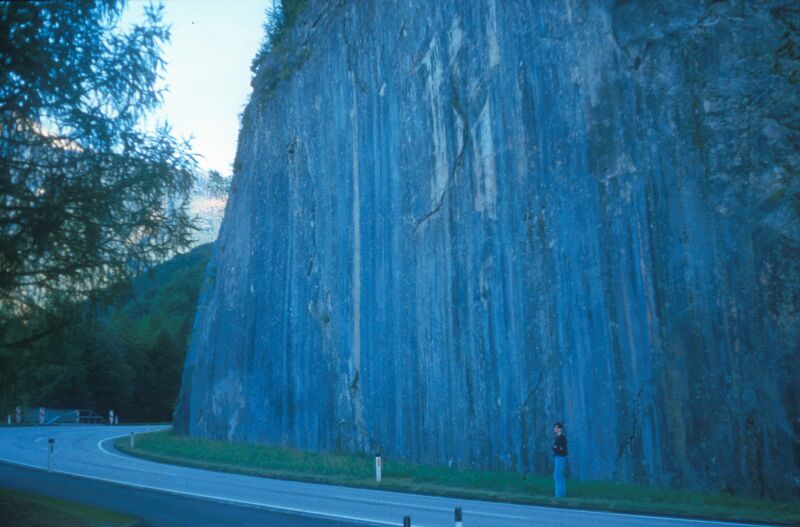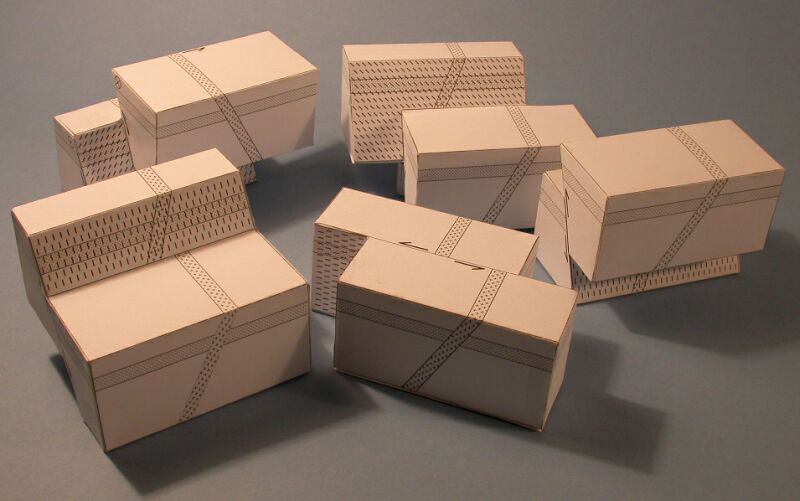Type of faults
Faults are one of the most impressive and beautiful structures arising from deformation of the earth's crust; we are not, of course, biased! The photograph below shows a steeply-dipping strike-slip fault from the shore of Lake Mondsee, Austria; this is a natural heritage site for "Harnischfläche" (i.e. slickensides), although the lines you see are actually formed from water run-off and are not the slickensides themselves! Determining the slip-direction and the total displacement is often not an easy task. Slickensides are useful shear sense indicators, but generally cannot be used for determining the displacement. The displacement can however be obtained when a linear element (e.g. fold axis, intersection of two planes) is displaced by the fault.

The models illustrate different types of faults. The faulted block has the same dimensions and stratigraphy. The slip sense on each fault is shown; these can be derived from striations, slickensides etc. (see Fault Gallery). The sense and amount of slip can however also be determined directly from the displacement of a linear element i.e. the intersection line of a sandstone layer and a dyke. It is worth examining the apparent off-sets in map view, perhaps drawing a geological map for the hangingwall block i.e. with the fault scarp eroded.

|
|
Normal fault model
Reverse fault model
Strike slip fault model
Oblique normal fault model
Oblique reverse fault model
BACK
| 
